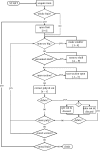Culture in great apes: using intricate complexity in feeding skills to trace the evolutionary origin of human technical prowess
- PMID: 17289650
- PMCID: PMC2346518
- DOI: 10.1098/rstb.2006.1996
Culture in great apes: using intricate complexity in feeding skills to trace the evolutionary origin of human technical prowess
Abstract
Geographical cataloguing of traits, as used in human ethnography, has led to the description of 'culture' in some non-human great apes. Culture, in these terms, is detected as a pattern of local ignorance resulting from environmental constraints on knowledge transmission. However, in many cases, the geographical variations may alternatively be explained by ecology. Social transmission of information can reliably be identified in many other animal species, by experiment or distinctive patterns in distribution; but the excitement of detecting culture in great apes derives from the possibility of understanding the evolution of cumulative technological culture in humans. Given this interest, I argue that great ape research should concentrate on technically complex behaviour patterns that are ubiquitous within a local population; in these cases, a wholly non-social ontogeny is highly unlikely. From this perspective, cultural transmission has an important role in the elaborate feeding skills of all species of great ape, in conveying the 'gist' or organization of skills. In contrast, social learning is unlikely to be responsible for local stylistic differences, which are apt to reflect sensitive adaptations to ecology.
Figures

References
-
- Beck B.B. Animal tool behaviour. Garland Press; New York, NY: 1980.
-
- Boesch C. The emergence of cultures among wild chimpanzees. In: Runciman W.G, Maynard-Smith J, Dunbar R.I.M, editors. Evolution of social behaviour patterns in monkeys and man. British Academy; London, UK: 1996. pp. 251–268.
-
- Boesch C, Boesch H. Tool use and tool making in wild chimpanzees. Folia Primatol. 1990;54:86–99. - PubMed
-
- Boesch C, Marchesi P, Marchesi N, Fruth B, Joulian F. Is nut cracking in wild chimpanzees a cultural behaviour? J. Hum. Evol. 1994;26:325–338. doi:10.1006/jhev.1994.1020 - DOI
-
- Byrne R.W. The technical intelligence hypothesis: an additional evolutionary stimulus to intelligence? In: Whiten A, Byrne R.W, editors. Machiavellian intelligence II: extensions and evaluations. Cambridge University Press; Cambridge, UK: 1997. pp. 289–311.
Publication types
MeSH terms
LinkOut - more resources
Full Text Sources
Research Materials
Miscellaneous

